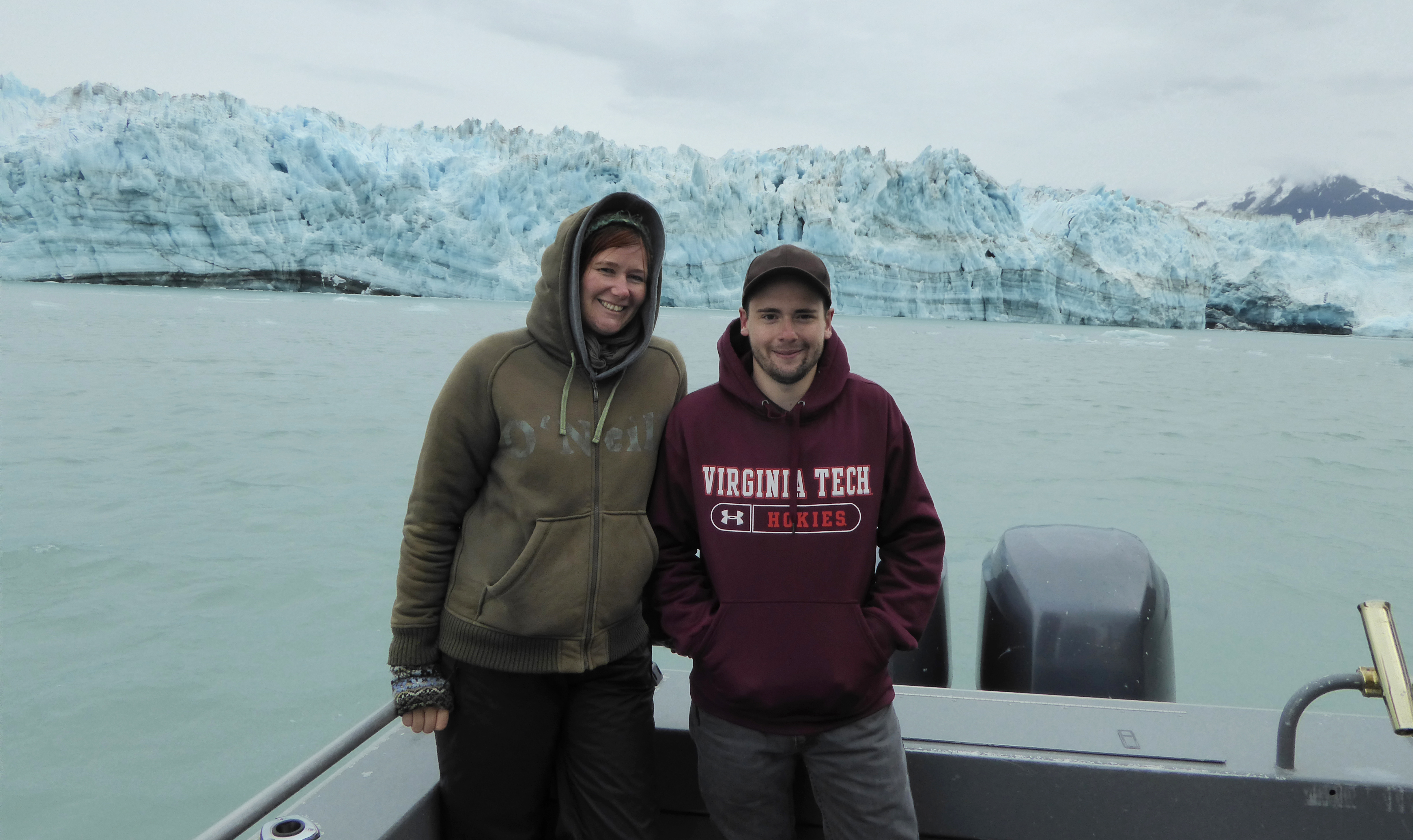Nina Stark creates waves on recent trip to study ocean engineering

Geotechnical engineering can lead engineers to remote places all over the world.
Nina Stark, assistant professor of civil and environmental engineering at Virginia Tech, experienced this type of seclusion on her recent visit to Herschel Island, located in the Beaufort Sea off the coast of the Yukon Territory in Canada. In fact, it is Yukon's northernmost point, where people do not permanently reside.
That didn't stop Stark, geotechnical engineering master's student Brandon Quinn of Schoharie, New York, as well as researchers from Potsdam, Germany; Edinburgh, United Kingdom; and the Geological Survey Canada, from going to take surveys and extract samples that could predict the development of the Arctic in the future.
The island is referred to as a permafrost etch, or a frozen mud island. As the temperature changes, this mud island melts causing mudslides to flow into the ocean. Stark is using this project, funded by the National Science Foundation, to help predict the future of the area.
"The focus is to find out about coastal erosion in the permafrost and, overall, how this will effect development of that area in the future," said Stark.
During this trip to Herschel Island, the team was able to survey 299 positions and gather a large data set in the coves and passages around the island. Aurora Research Institute, which is funded by the Canadian government, provided support and a base for the researchers while they were out collecting data and extracting samples.
Stark is hopeful that the data will lead to some positive findings, but it didn't come without challenges.
Working in such a remote environment meant the team was forced to use available resources, rather than the expensive equipment it is accustomed to working with. The team adapted by using floating buoys made from water jugs or wood scraps to balance its equipment.
Stark hopes to return to the island in the future with Ph.D. students and researchers from around the world to continue to study the behavior of frozen mud islands in the Arctic.
While traveling, Stark and Quinn also worked on another project titled Geotechnical Survey Strategies for Cost-Efficient Ocean Renewable Energy Early Site Characterization. The project is funded by the Institute for Critical Technology and Applied Science (ICTAS) at Virginia Tech.
The latest trip was a follow-up to the trip she took in May to investigate the site for a wave energy converter.
Working in collaboration with Department of Business Information Technology in the Pamplin College of Business, they surveyed more than 250 positions in less than four days on Cannon Beach in Yakutat, Alaska. Other groups that worked with them on the project were Resolute Marine Energy based in Boston, Massachusetts; University of Fairbanks; and the City of Yakutat.
Through the use of free fall penetrometers, designed by Stark and built by a company in Halifax, Canada, they were able to take flow pressure measurements that will help the city in decision-making regarding a wave energy converter.
For Stark's research, she hopes that the trip will help them test and improve the surveying techniques, while also supporting the city through improvements to the geotechnical survey for wave energy. This data can be applied in the future to utilize the motion of ocean surface waves to create electricity for Yakutat.
Stark joined the Virginia Tech faculty in 2013 from a postdoctoral fellow position she held since 2012 at Dalhousie University. She has served as a research assistant at the MARUM Center for Marine an Environmental Science, taking part in several field experiments in the North Sea, Baltic Sea, and Northern and Southern areas of the Pacific Ocean.
Stark received her master's degree in geophysics from Westphalian Wilhelms University (Germany). She received her doctorate in marine geotechnics at the MARUM Center for Marine and Environmental Sciences at the University of Bremen (Germany), in 2011.




